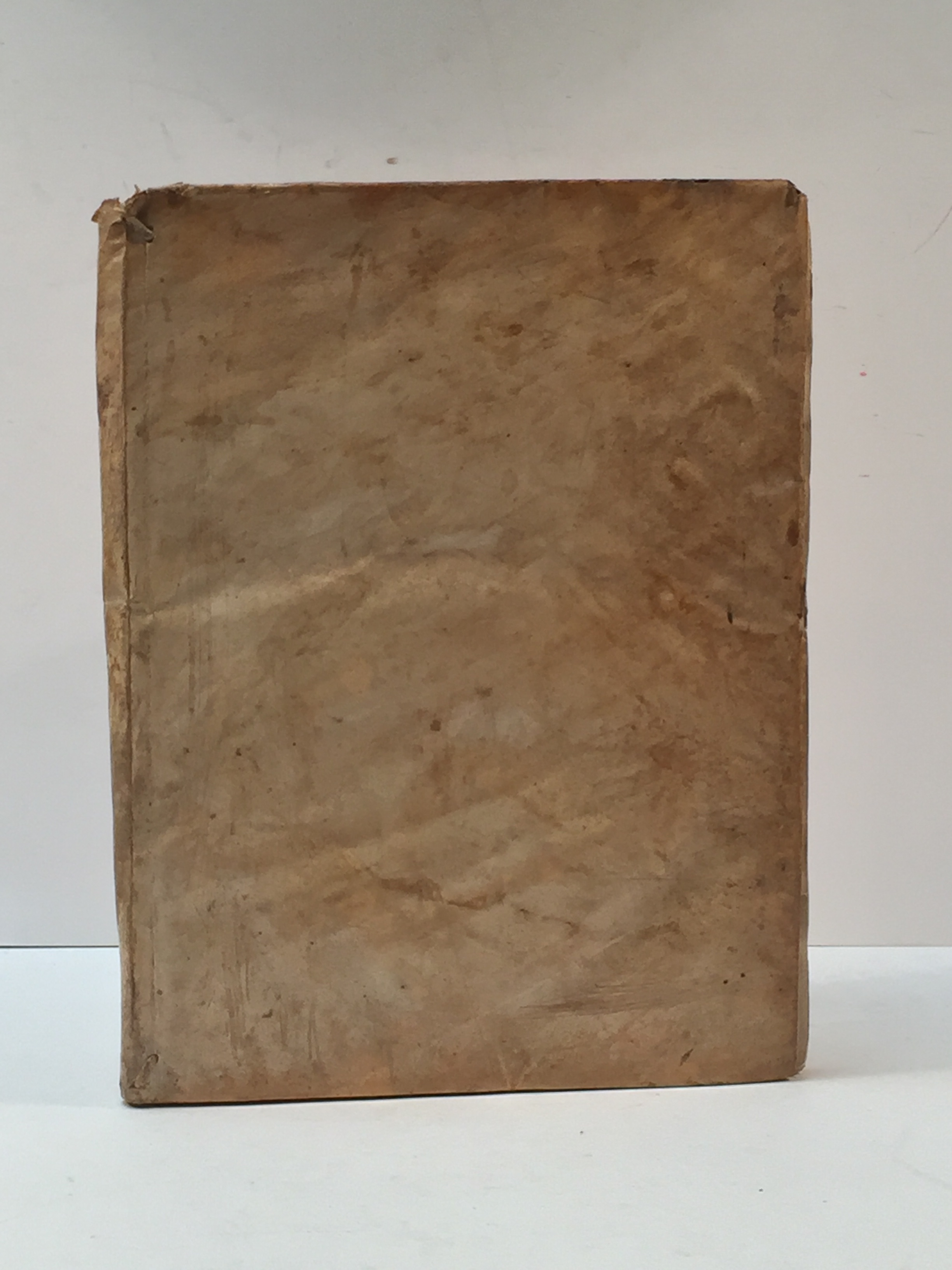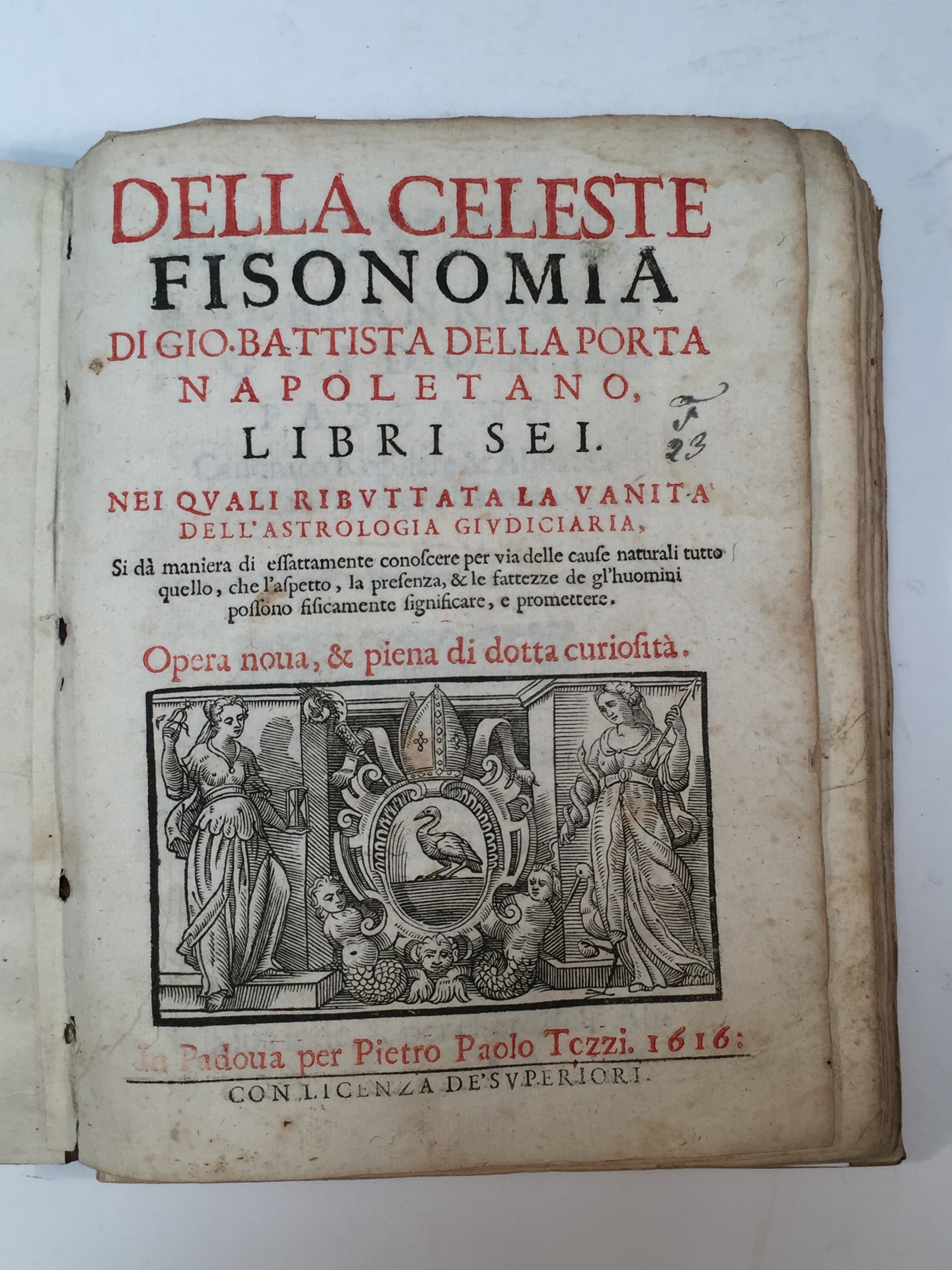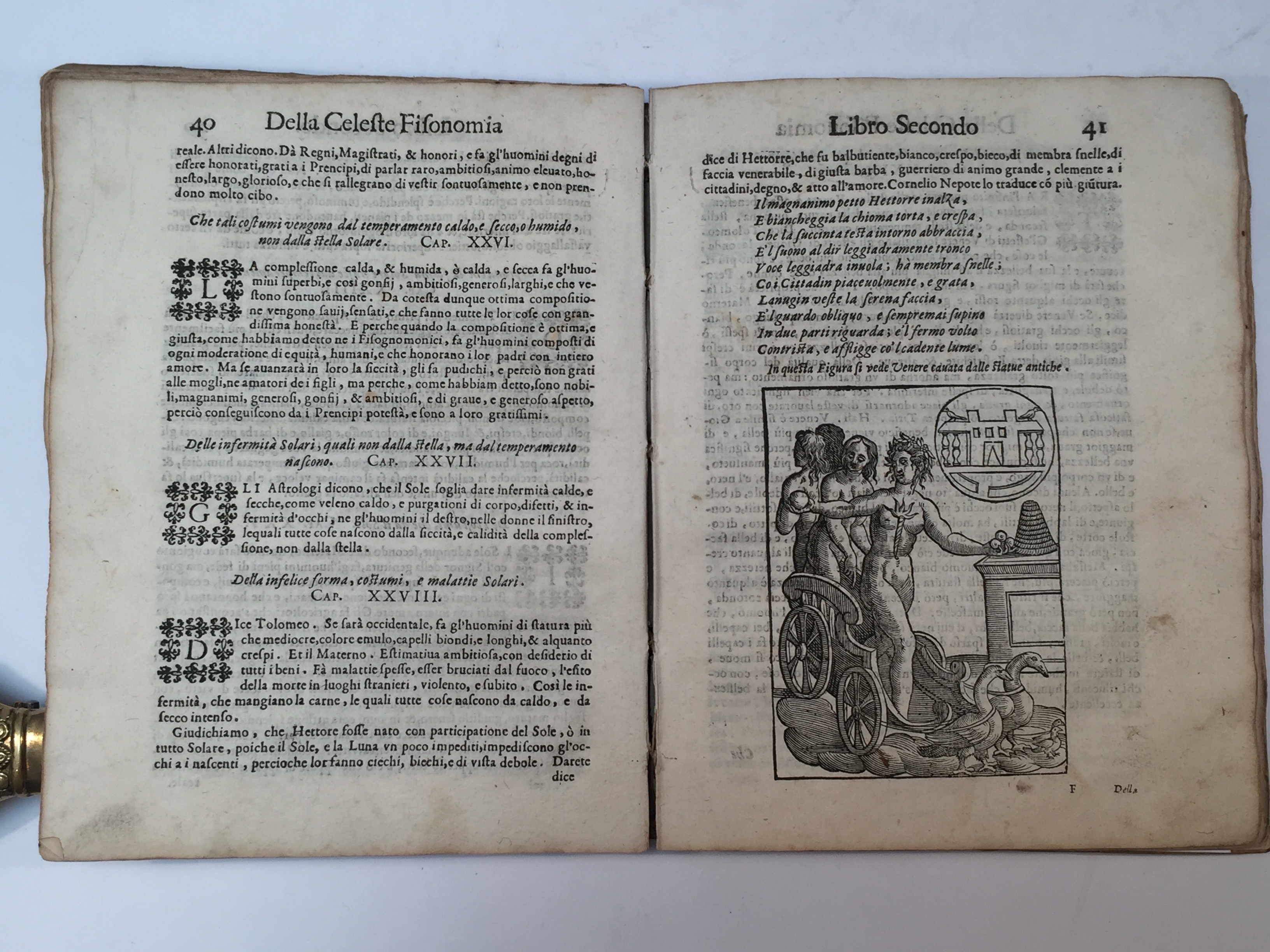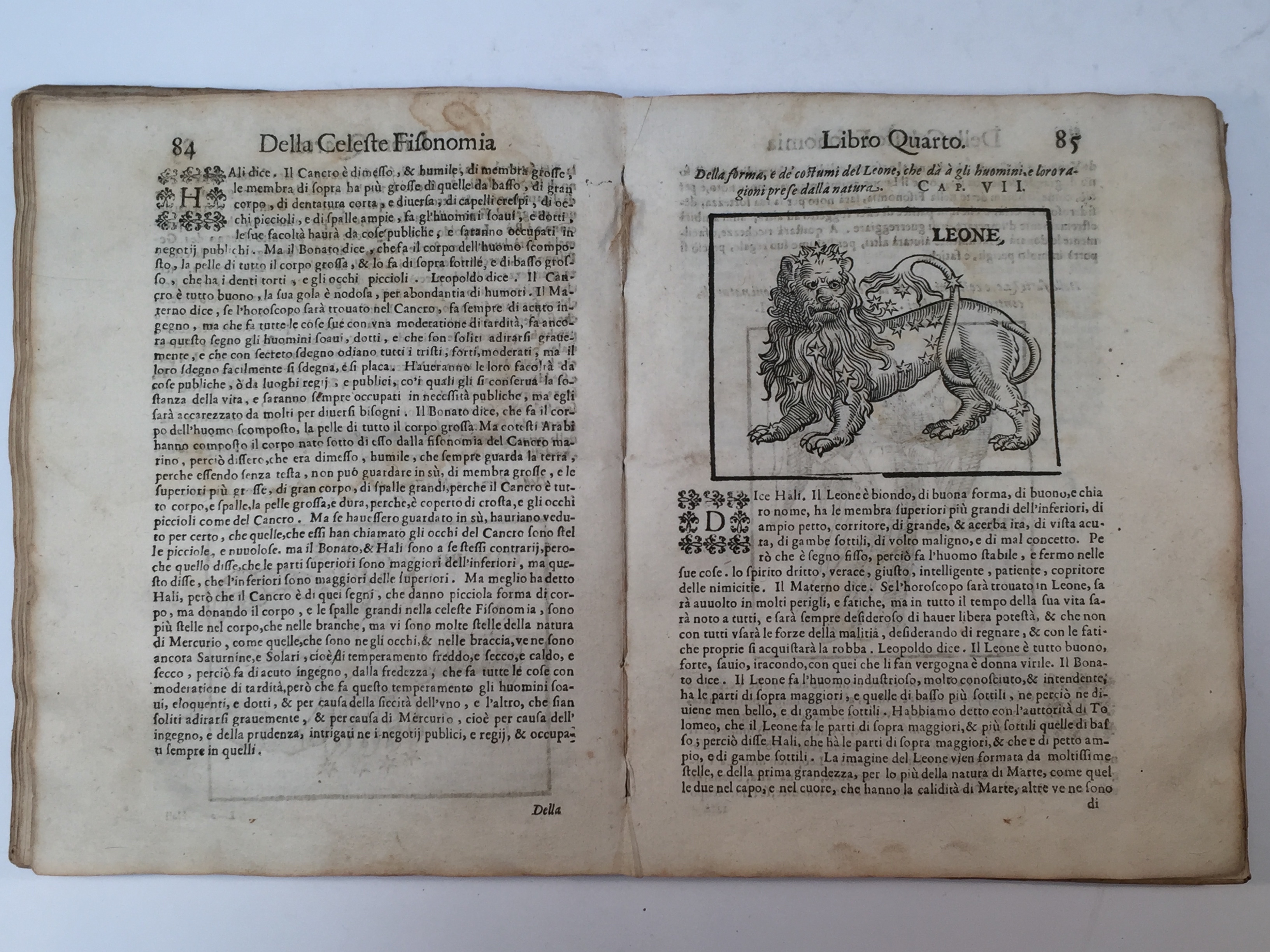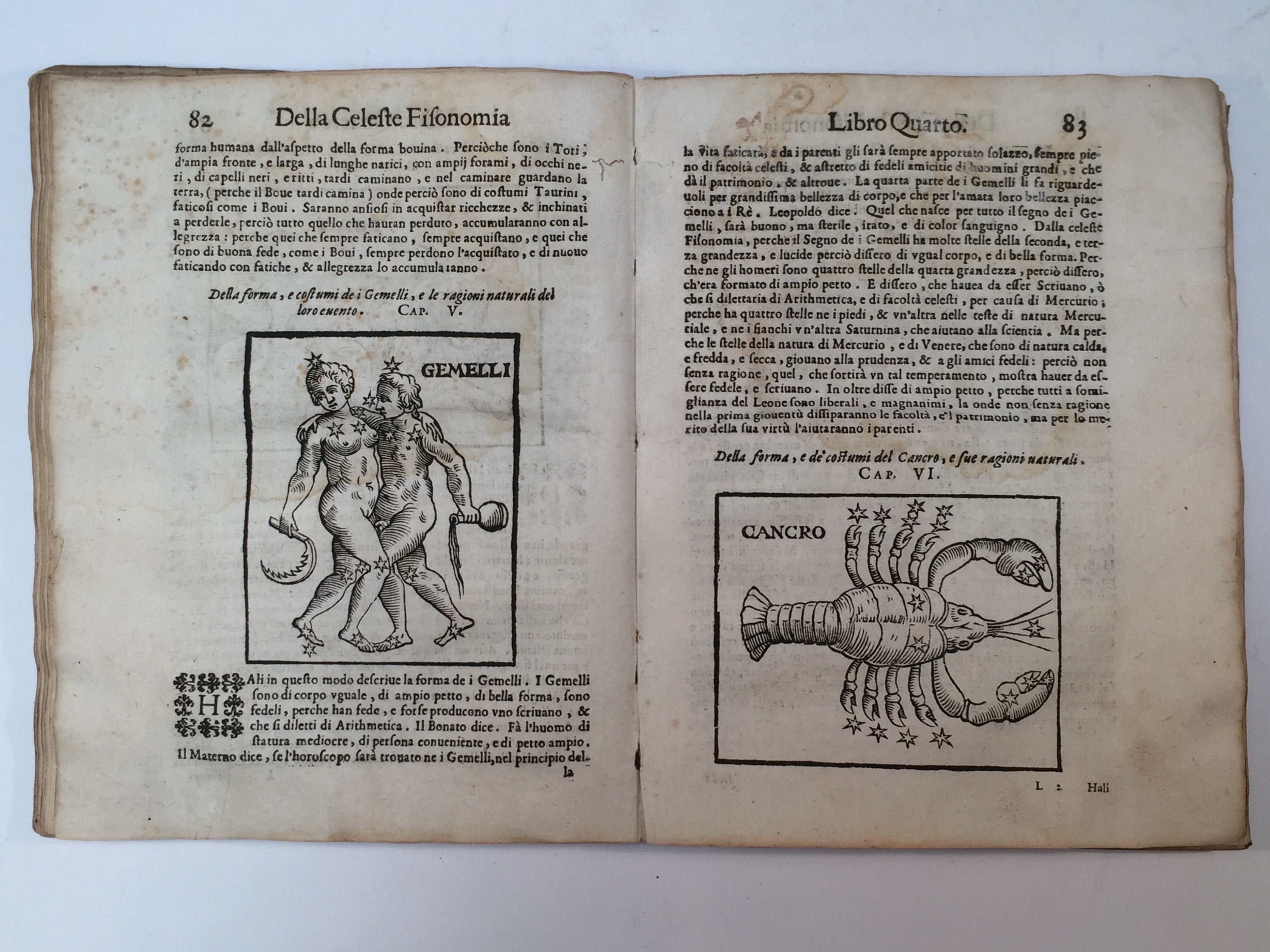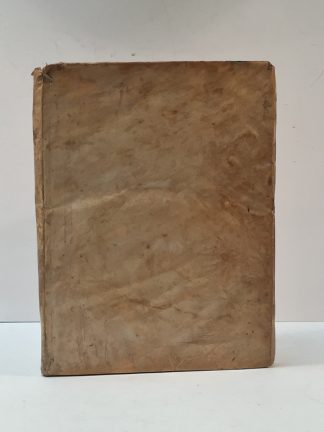DELLA PORTA, Giovan Battista.
SUPERBLY ILLUSTRATED ASTROLOGY
Della celeste fisionomia…libri sei
Padua, per Pietro Paolo Tozzi, 1616£1,950.00
4to. pp. (xii) 144 (iv). Roman letter, with Italic, t-p in red and black. Printer’s device to t-p; woodcut cartouche with portrait of Giovan Battista della Porta surrounded by human and animal heads (p. xii); over 30 woodcuts (some repeated) of ancient and modern princes, zodiac signs, personified planets and constellations; decorated initials, head- and tailpieces. Very light age browning, some outer margins a bit thumbed, a few ink marks, ms casemark to t-p, occasional light marginal foxing, second gathering slightly loosening. A good, well-margined copy in contemporary polished vellum over boards.
Good copy of the second vernacular edition of this handsomely illustrated, veiled defence of astrology. A scholar of natural sciences, the Neapolitan Giovan Battista della Porta (1535-1615) published extensively on subjects including agriculture, cryptography, meteorology and chemistry, and was at the centre of a wide scholarly network including Galileo. For his interest in ‘judicial’ astrology—not strictly concerned with heretical, occult questions, but with natural science, medicine and meteorology—he founded the Academia Secretorum Naturae. Due to his theorisation of magic as an instrument for the understanding of natural phenomenology, he was investigated by the Inquisition in the mid-1580s. ‘Della celeste fisionomia’, first published in Latin in 1603 and in the vernacular in 1614, was a fake attack against the ‘imaginary’ discipline of astrology which the author had apparently repudiated after being warned by the Church. Through theories drawn from ancient and medieval authorities and under the pretence of dismissing the discipline in its entirety, della Porta rejected only the foundations of traditional astrology. He provided instead a different astrological theory according to which earthly bodies were dependent on the nature and mixing of their constitutive four humours in relation to planets and not simply on the domination of planets tout court. He illustrated the influence of the humours on human temperament and physical state—e.g., the ‘unhappy’ Saturnine (phlegmatic) constitution caused a melancholic disposition and illnesses including epilepsy, leprosy and kidney infections. Only if grounded in this theory could astrological prognostication based on the analysis of appearance and disposition be correct. Most interesting is his connection between human and animal physiognomy in the zodiac—with Aries causing a hairy appearance and Taurus a broad forehead—and the way in which predictions could proceed from physical traits like moles, build and height.
BL STC C17 It. p. 700; Cantamessa I, 1246. Not in Brunet, Graesse or Riccardi.In stock


